Sh2-101 in Three Palettes
Click an image for full size version
July 24, 2025
The main object in this image, Sh2-101, is also called the Tulip Nebula. It lies in Cygnus, not far from the Crescent nebula. Sh2-101 is about 6,000 light years away and is set within the rich star field of the Northern hemishpere’s summer Milky Way. I’ve presented this image in three colour palettes, each revealing slightly different impressions and highlighting the variation in chemical makeup of different regions of the nebula.
This image has a very small field of view, but there is a lot going on around it in this very busy region of Cygnus. This very recent wide-field image includes Sh2-101.
Tekkies:
Acquisition, focusing, and control of Paramount MX mount with N.I.N.A., TheSkyX. Guiding with PHD2. Primalucelab low-profile 2″ Essato focuser, ARCO rotator and Giotto flat panel. Equipment control with PrimaLuce Labs Eagle 4 Pro computer. All pre-processing and processing in PixInsight. Acquired from my SkyShed in Guelph. Above average transparency and seeing. RGB data acquired under little moonlight, and SHO data acquired in variable moonlight, between June 14-23, 2025.
Celestron 14″ EDGE HD telescope at f/11 (3,931 mm focal length) and QHY600M-SBFL camera binned 2×2 with Optolong filters.
28x2m Red = 0hr56m
28x5m Green = 0hr56m
28x5m Blue = 0hr56m
88x5m S2 = 7hr20m
87x5m Ha = 7hr15m
86x5m O3 = 7hr10m
Total: 24hr33m
Preprocessing: The WeightedBatchPreProcessing script was used to perform calibration, cosmetic correction, weighting, registration, local normalization, integration, Drizzle integration, plate solving, and auto-cropping.
Colour master: A colour master was made from the Red, Green and Blue masters using ChannelCombination in RGB mode. Another was made with the S2, Ha and O3 masters
Gradient Removal: DynamicBackgroundExtraction was applied to the RGB and SHO masters.
Colour Calibration: ColorCalibration was used to calibrate the RGB master.
Deconvolution: BlurXterminator was used on the RGB and SHO masters with Automatic psf at default settings.
Linear Noise Reduction: NoiseXterminator was applied to the RGB and SHO masters with settings Amount=0.9 and Detail=0.35
Star Removal: StarXterminator was used to remove the stars from each of the RGB and SHO masters, with default settings. Only the RGB stars-only image was preserved.
Stretching: HistogramTransformation was applied to the RGB and SHO masters to make pleasing images. Approximate background level after the stretches was 0.10.
Nonlinear Processing
Background Cleanup: Artifacts that were visible in the three master images were removed using the CloneStamp tool.
Nonlinear Noise Reduction: NoiseXterminator was used to reduce noise in the background areas of the RGB, Hubble and Forrax palette masters with settings Amount=0.9 and Detail=0.15
Dynamic Range Compression: The CreateHDRImage script was used to compress the core of the nebula using a mask made with the RangeSelection tool. This was applied to all three images.
Contrast Enhancement: LocalHistogramEqualization was applied twice to each image. A Contrast Limit of 1.5 and 1 iteration was used for each LHE application (scale 1150, strength 0.18; scale 50, strength 0.22).
Brightness Enhancement: Using a mask to protect the background and bright parts of the nebula, the faint parts of the nebula were brightened in each master image with ExponentialTransformation and CurvesTransformation.
Sharpening: A mask was used to select brighter regions of nebulosity in the RGB and SHO for sharpening with MultiscaleMedianTransform (Layers 2 – 4 with strengths of 0.07, 0.07, and 0.03, respectively).
Foraxx Palette Image Creation: The S, H and O channels were extracted from the SHO starless image and combined using the Foraxx Palette Utility.
Hubble Palette and Foraxx Colour Adjustments: CurvesTransformation was used with the Hue tool to adjust the colour tones in the two narrowband images.
Addition of Ha to RGB: The Green (i.e. Ha) channel of the SHO image was used to enhance the RGB image using Jergen Terpe’s CombineHaWithRGB script.
Star Processing and Restoration: HistogramTransformation was used to stretch the stars-only RGB image, followed by CurvesTransformation through a star mask to boost saturation using the Saturation and CIE c* sliders. The stars were added back into the three master images using the Screen blending mode in PixelMath with the expression combine(starless, stars, op_screen()).
Final Steps: Background, nebula and star brightness, contrast and saturation were adjusted using several iterations of CurvesTransformation, with masks, as required. ICCProfileTransformation (sRGB IEC61966-2.1; Relative Colorimetric with black point compensation) was applied prior to saving as a jpg. The finder chart was made using the FindingChart process.

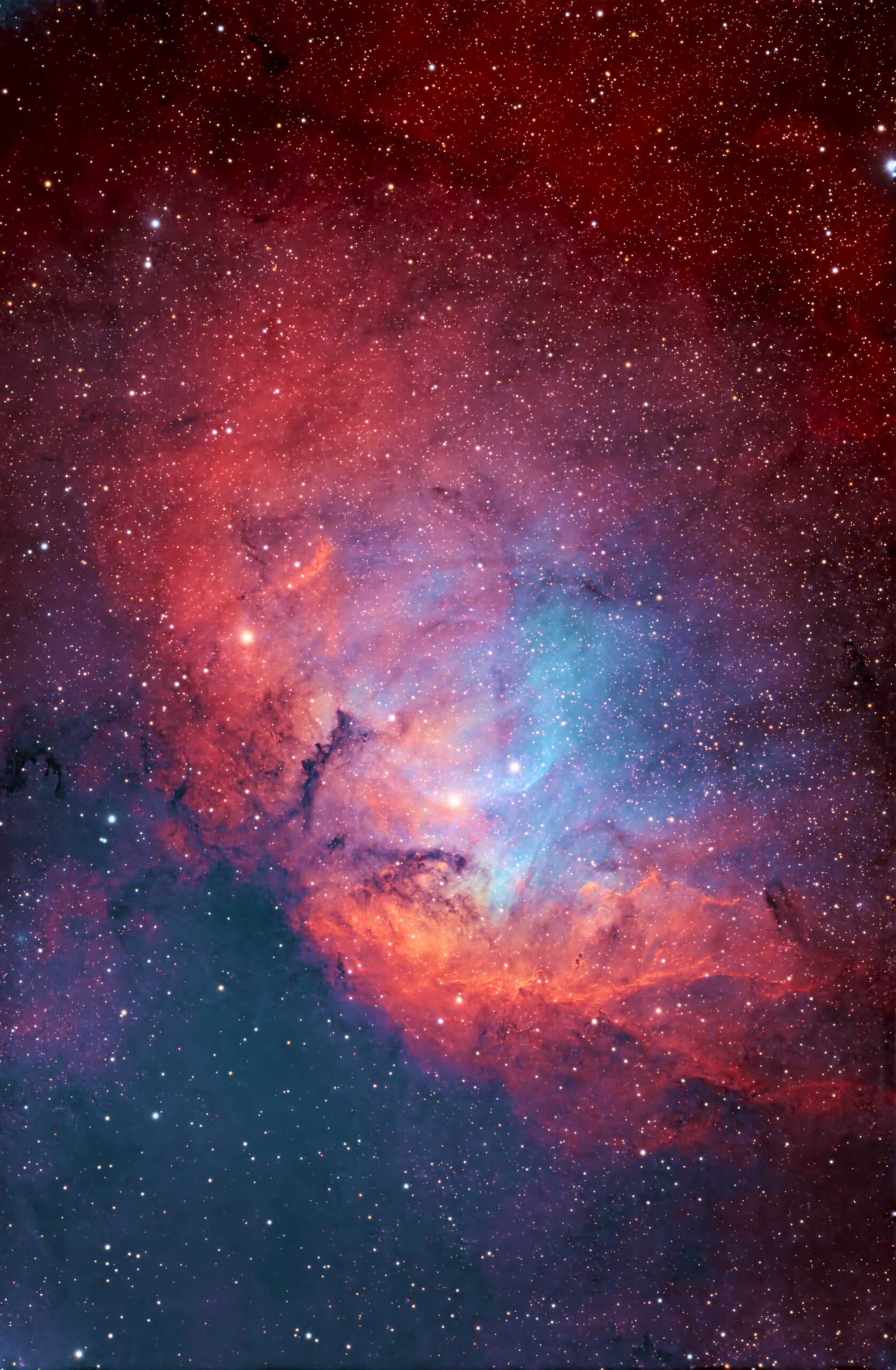
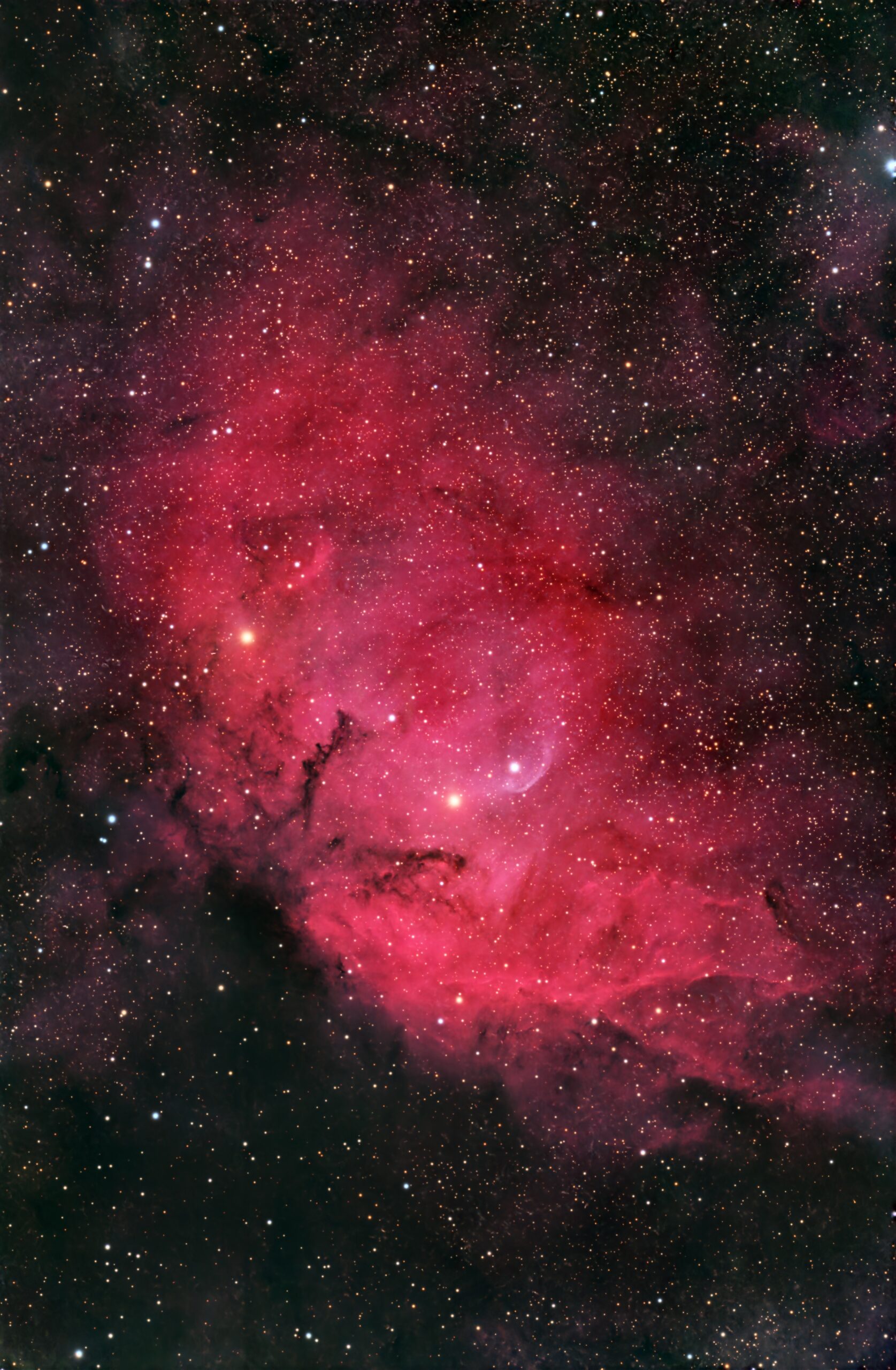
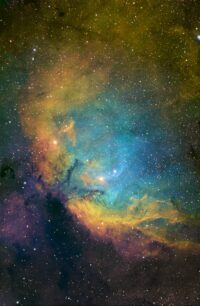
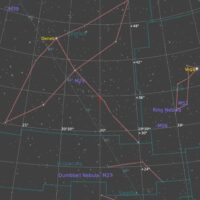
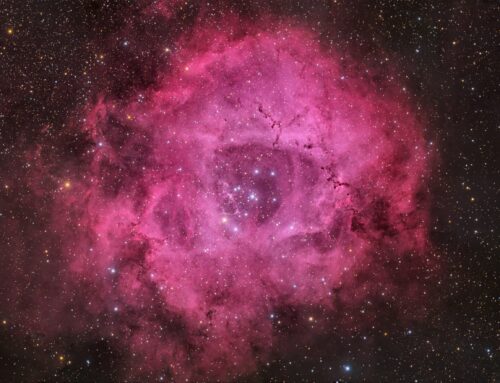
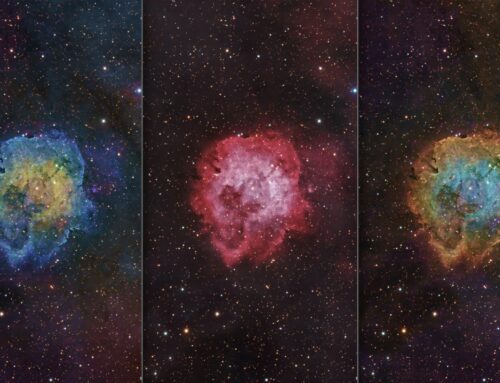
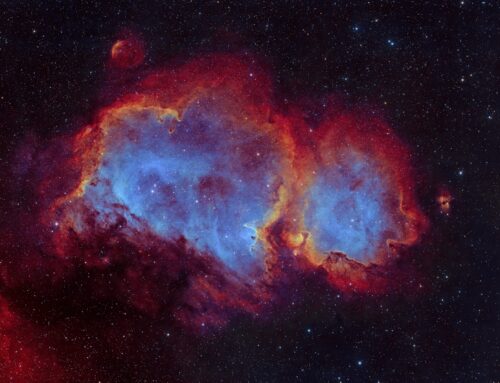

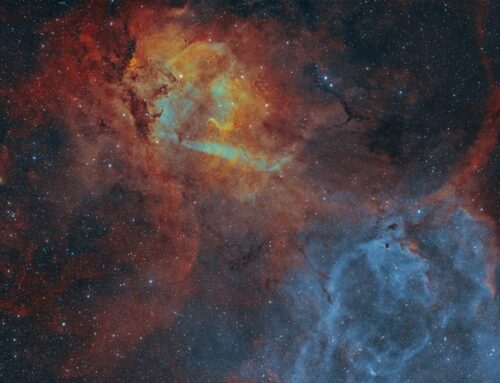
Leave A Comment